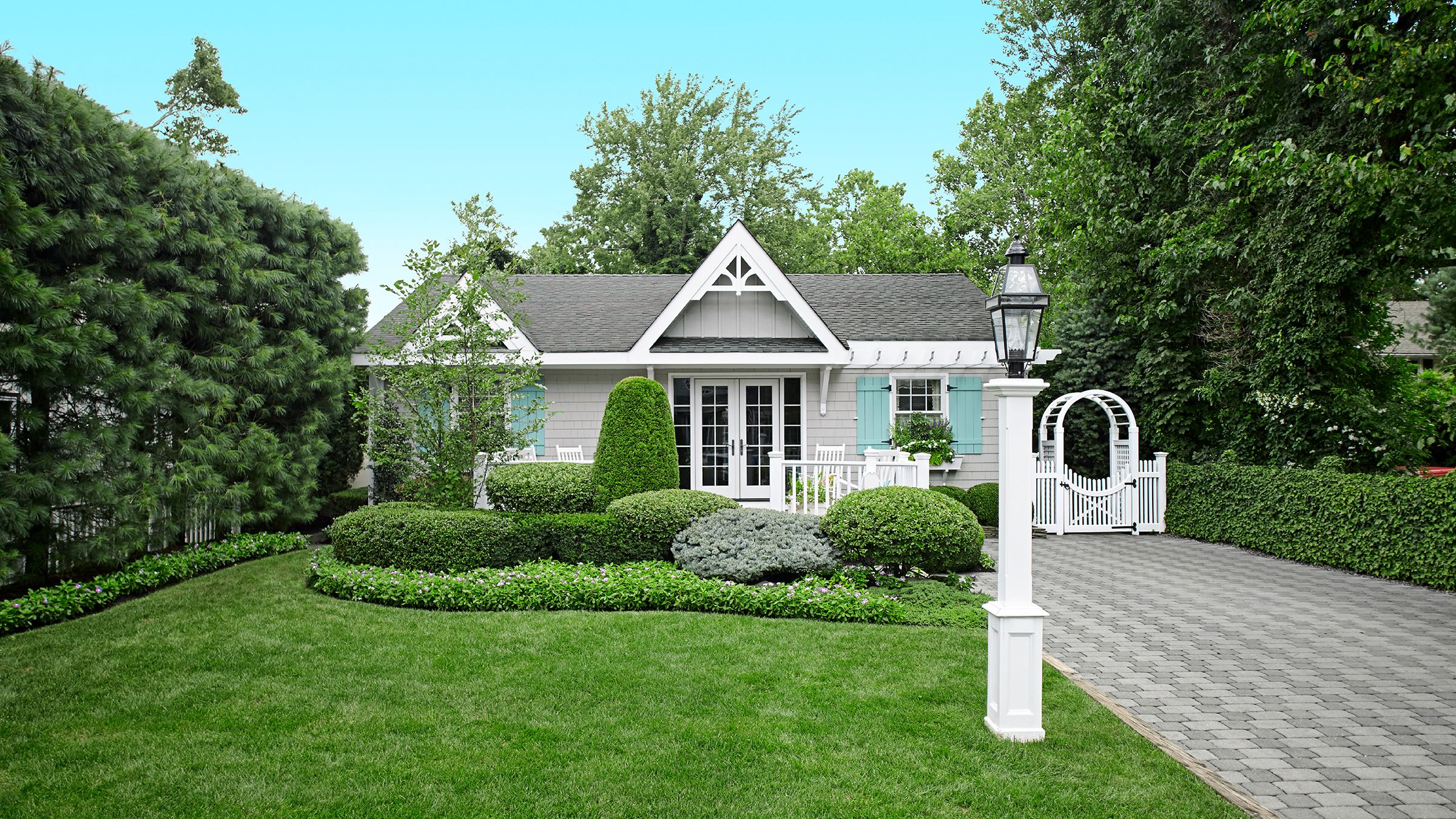Project details
Skill
Cost
Estimated Time
Giving your home’s curb appeal a boost doesn’t always require a major renovation. Sometimes, a small upgrade to an existing feature, such as a steel lamppost, can make a big difference. This Old House senior technical editor, Mark Powers, walks through how to dress up a drab metal post in the video above.
Steel Lamppost Upgrade Project Overview
This steel lamppost project involves creating a decorative PVC column that slips over the existing post to achieve a classic, Colonial Revival-inspired look. The result is a chunky, square column wrapped in layers of moldings that enhances your home’s street-front lighting.
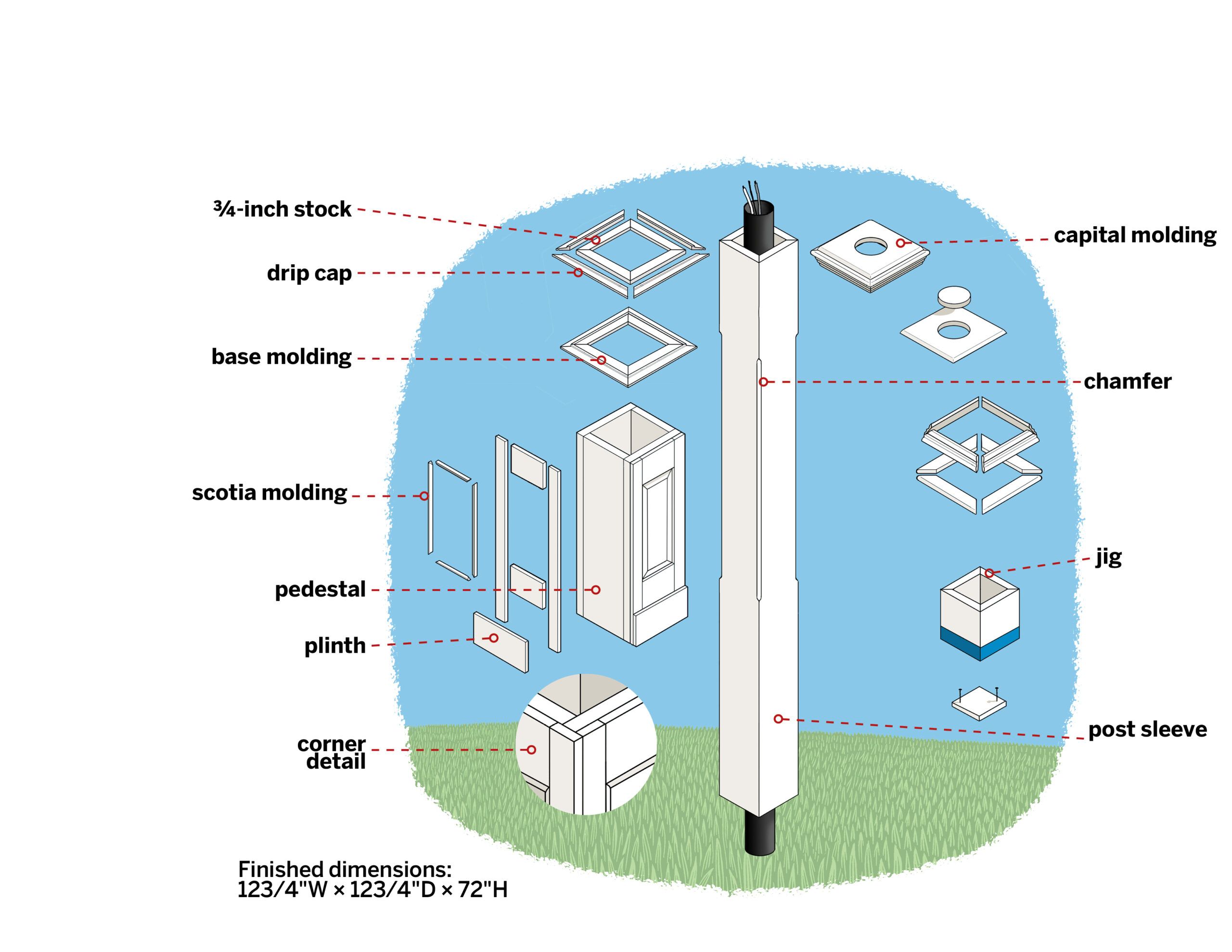
Materials Needed
Here are the required materials for this project:
- Deck screws
- Light fixture
- Paint (optional)
- Painter’s tape
- PVC cement
- PVC column wrap kit
- PVC molding
- PVC trim boards
Tools Required
Have the following tools on hand:
- Circular saw
- Clamps
- Combination square
- Drill/driver
- Hole saw (3-inch diameter)
- Miter saw
- Pencil
- Sanding block
- Tape measure
- Trim router with chamfer and roundover bits
- Utility knife
 Tape measure
Tape measure Pencil
Pencil Circular saw
Circular saw Miter saw
Miter saw Trim router
Trim router Chamfer bit – 45-degree
Chamfer bit – 45-degree Drill/driver
Drill/driver Clamps
Clamps Roundover router bit – 3/4-inch
Roundover router bit – 3/4-inch Hole saw bit – 3-inch
Hole saw bit – 3-inch Combination square
Combination square
Step-by-Step Steel Lamppost Upgrade Guide
Follow the steps below to upgrade your steel lamppost.
Step 1: Cut the Boards to Length
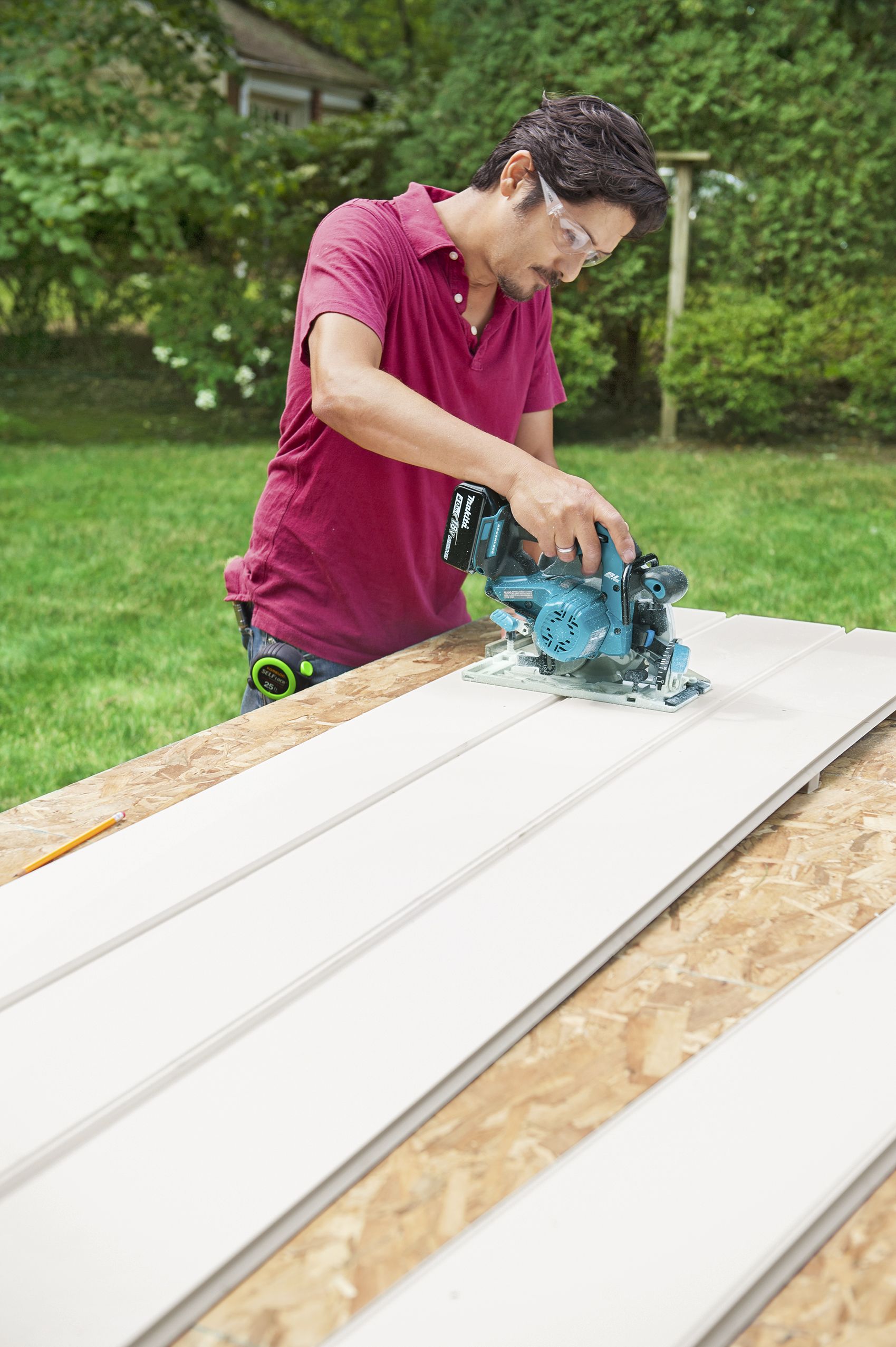
- Use a circular saw and miter saw to cut the PVC parts, except for the scotia molding, to final dimensions according to the cut list.
- Fold out the three taped sides of the column wrap kit.
- Place spacers on either side of the cutline and trim the panels to length with a circular saw.
- Cut the fourth panel to the same length.
- Save about 5 inches of the offcuts to make a jig for building the molding layers.
Step 2: Join the Sleeve Panels
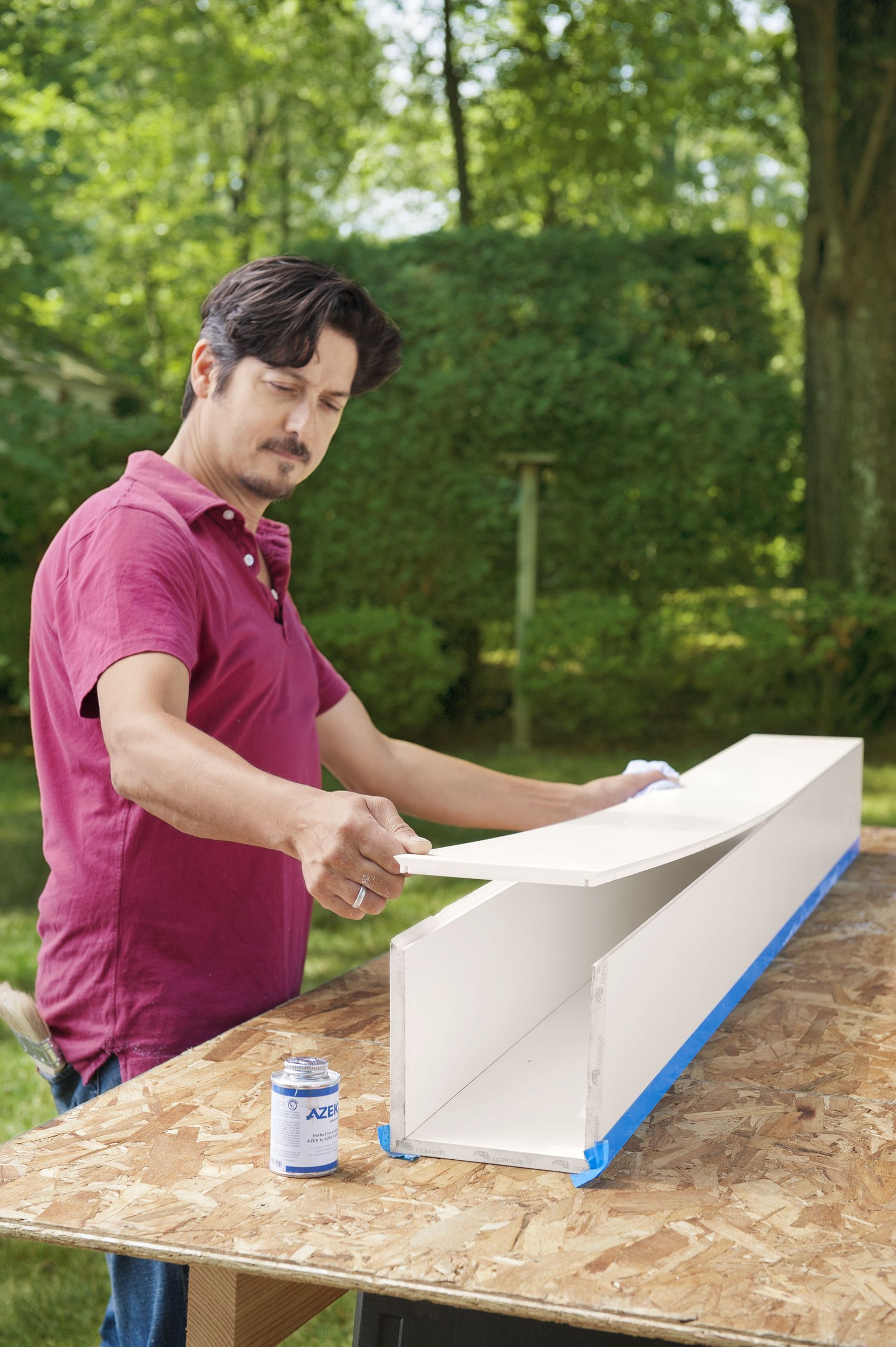
- Coat the grooved corners with slow-setting PVC cement. In the video, Powers uses one with a working time of 10 minutes.
- Starting at one end, fold the kit into a U shape, snapping the joints together, and work toward the other end.
- Use a dry rag to wipe away any adhesive that squeezes out.
- Add cement to the fourth panel and snap it into place.
- Repeat this process with the offcuts to make the jig.
- After the cement dries, peel the tape off and mark 10 inches and 36 inches from one end of the column.
- Chuck a 45-degree chamfering bit into a trim router and rout between the two marks on all four corners.
Step 3: Attach the Base
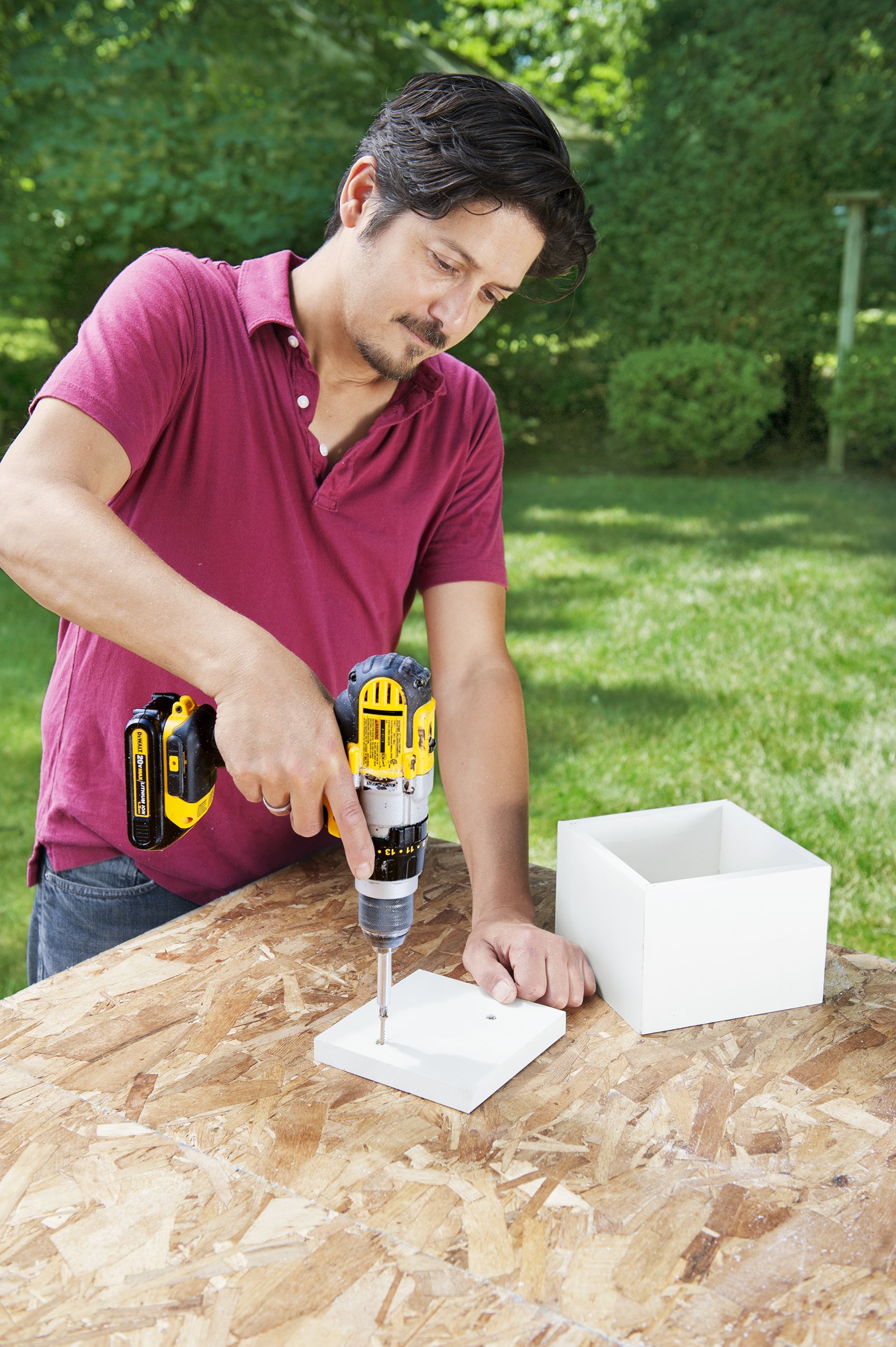
Fasten a 5¾-inch square block, which represents the inside dimensions of the column, to the work surface with 1¼-inch deck screws, as shown.
Step 4: Add the Form
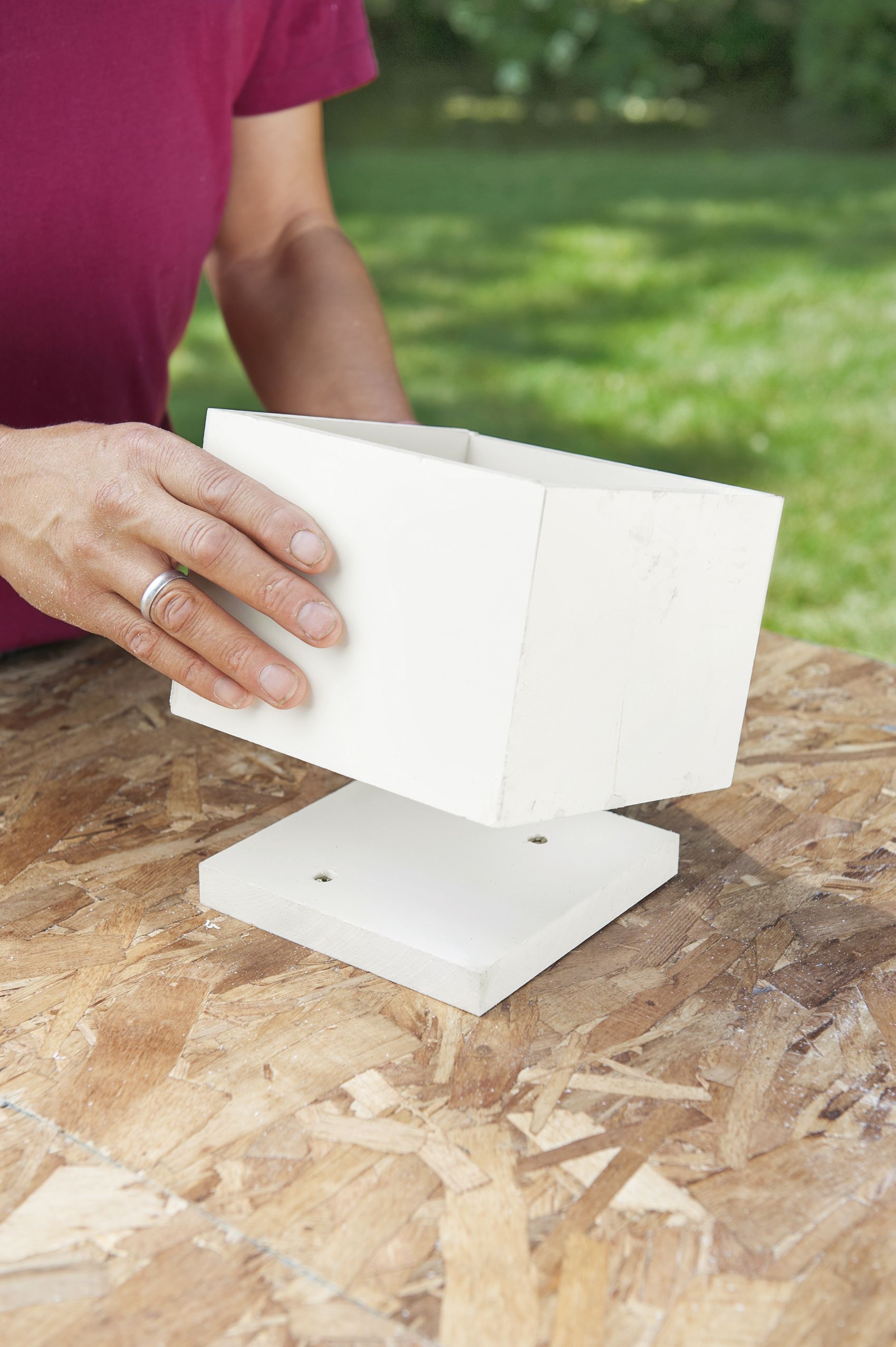
Fit the jig over the block. You’ll use it to assemble the rings of molding that embellish the post. Once you remove each assembly from the jig, the moldings will slip right over the finished column.
Step 5: Rout the Shelf Stock
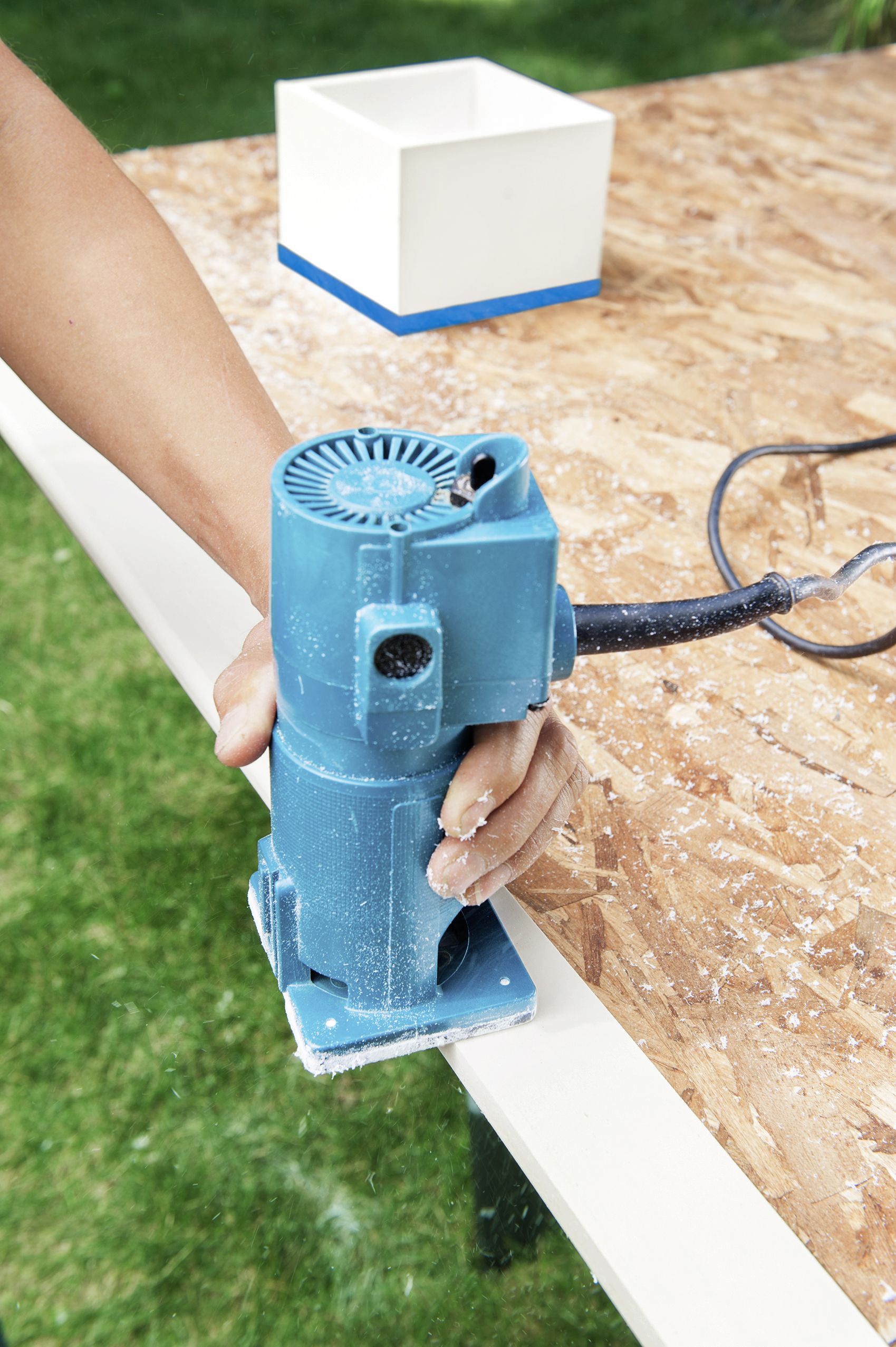
- Clamp a 2-inch-wide board overhanging the work surface.
- Fit the router with a ¾-inch roundover bit and push it along one edge.
- Flip the board and repeat on the underside of the same edge, completing the bullnose.
- Wrap the base of the jig in a wide band of painter’s tape to keep the molding from sticking to it.
- Cut four sections of shelf stock with 45-degree miters at either end to fit around the jig like a picture frame.
- Starting at one corner, coat the mitered ends with all-purpose PVC cement and pinch the pieces together for 30 seconds, using the jig to hold the joint square.
- Repeat at the other corners, cleaning any squeeze-out with a rag.
Step 6: Add the Bed Molding
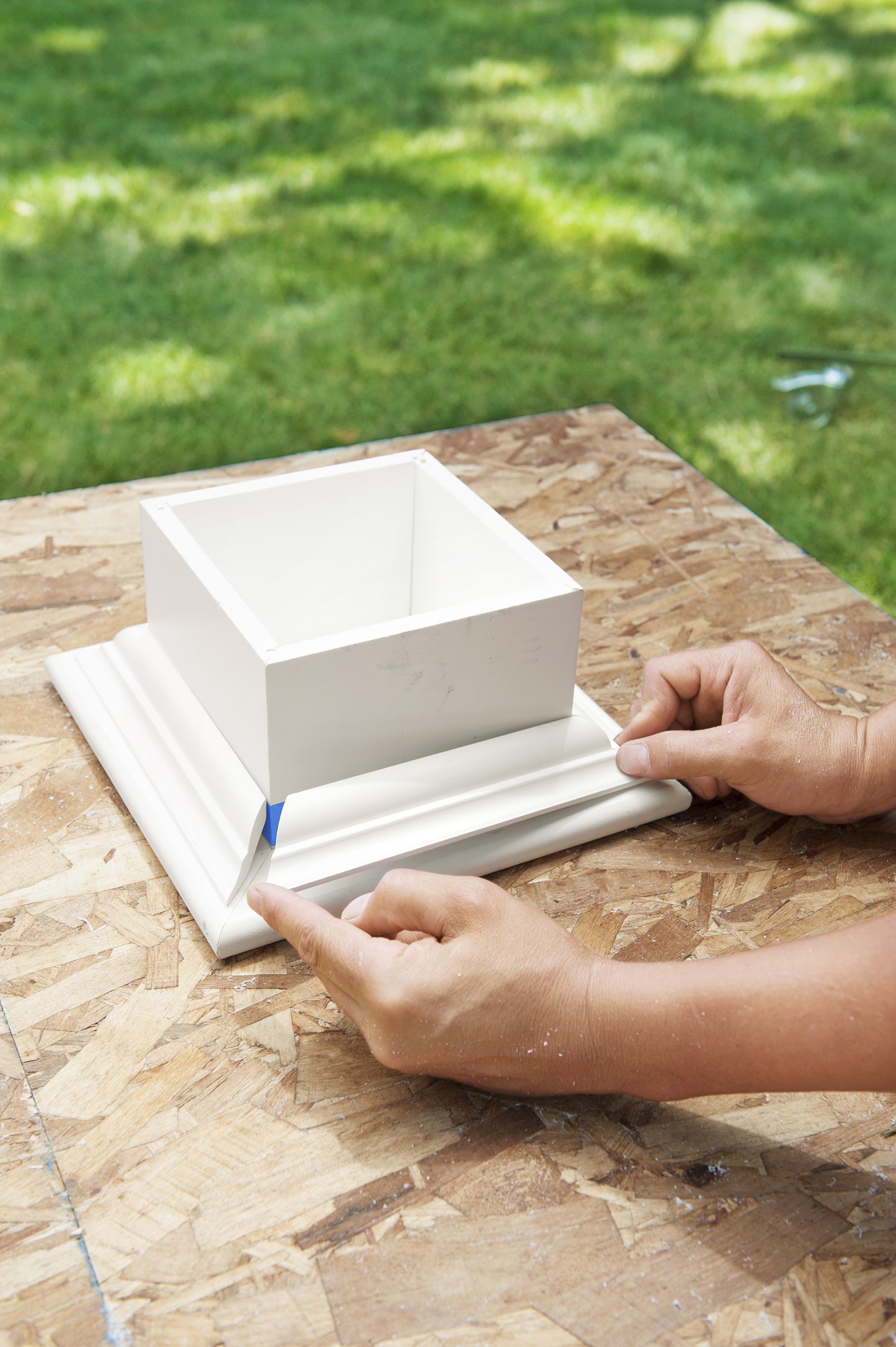
- Measure and miter four pieces of bed molding to layer onto the bullnose shelf.
- Add cement to the underside of the concave, or cove, detail on a piece and place that edge against the shelf while lining up the miters.
- Rest the molding’s nose detail against the jig. After the cement bonds, coat the next piece and press the wet miter into the first piece and the shelf.
- Complete all four sides.
Step 7: Make the Sleeve Block
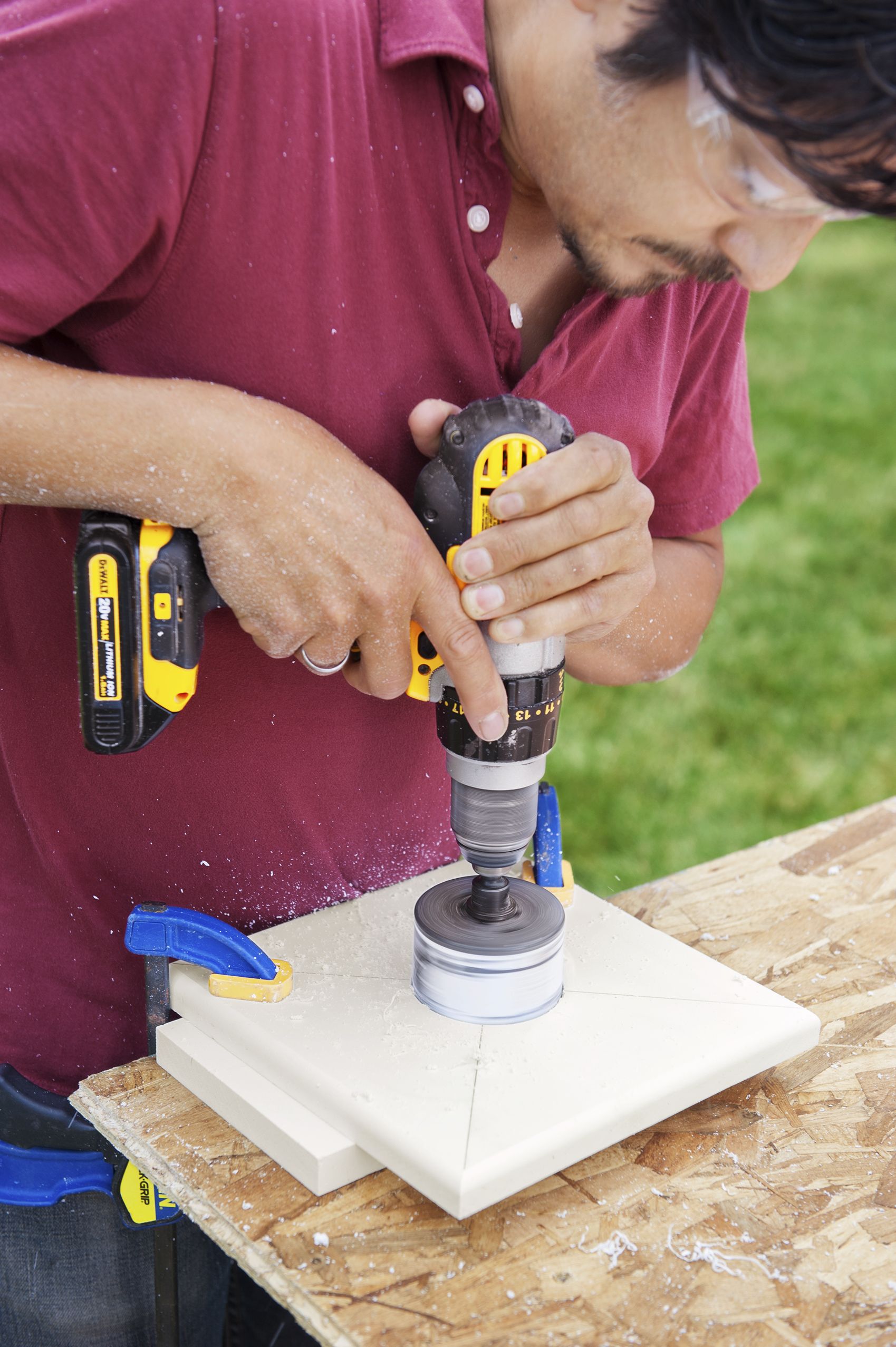
- Draw lines corner to corner on the piece to mark the center, then rout the edges of one face with the ¾-inch-radius roundover bit.
- Clamp the piece over scrap and use a hole saw to drill a 3-inch hole to slip over the existing lamppost.
- Erase the pencil marks.
- Remove the molding assembly from the jig and place it on the work surface, bed molding down.
- Apply cement around the inside perimeter of the shelf stock, then place the sleeve block on top, using a combination square to center it.
Step 8: Add Flat Stock
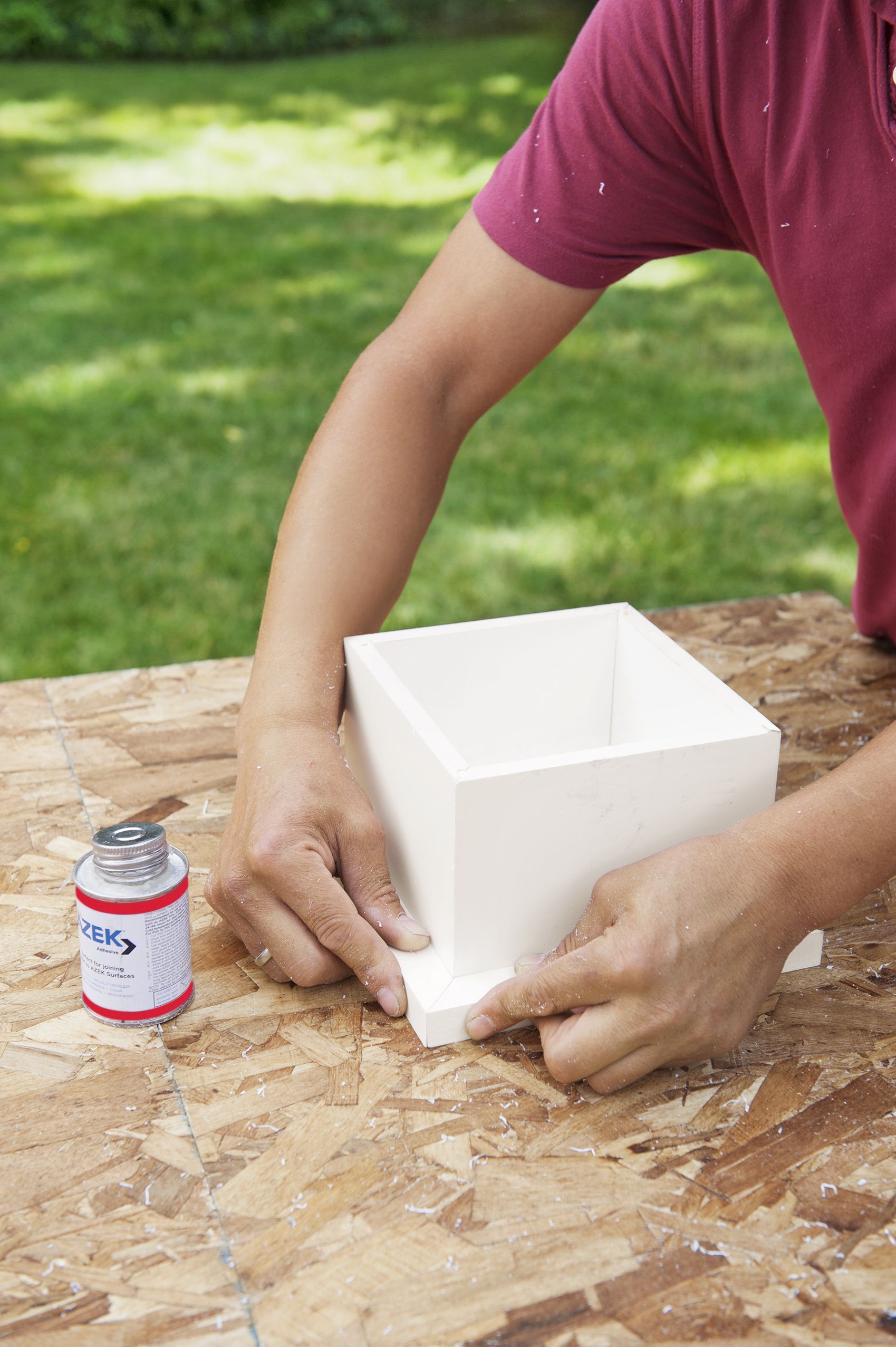
Back at the jig, make a picture frame out of four lengths of mitered ¾-inch square stock, as described in the previous steps.
Tip: Use an all-purpose PVC cement on the miter joints after you dry-fit them. It bonds in 30 seconds and cures in about 2 minutes.
Step 9: Wrap With Drip Cap
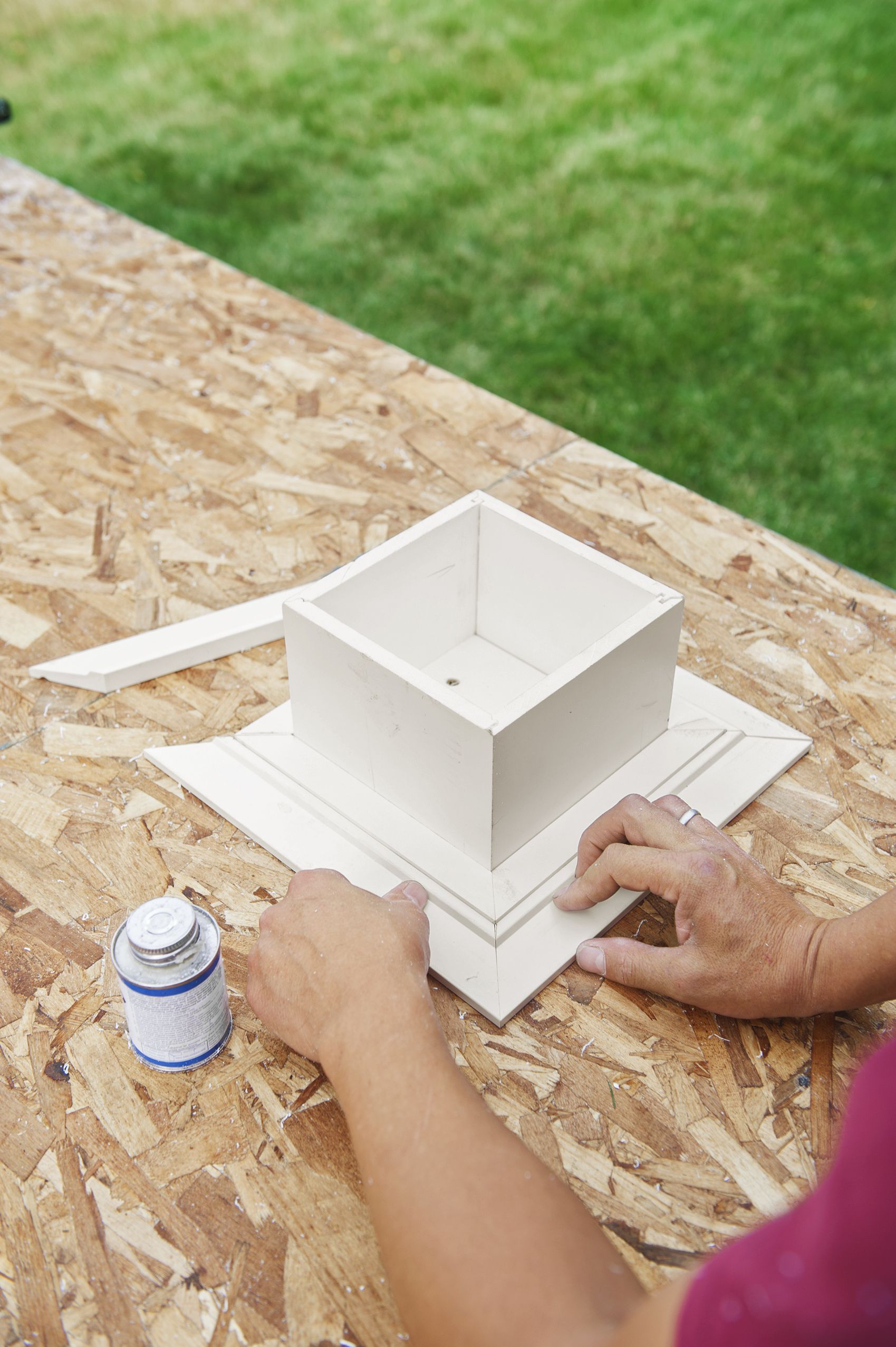
Apply cement to the back of a mitered drip cap and bond it to the ¾-inch stock. Complete the other three sides to make another picture frame. Once the cement sets, remove the molding assembly from the jig.
Step 10: Make the Panels
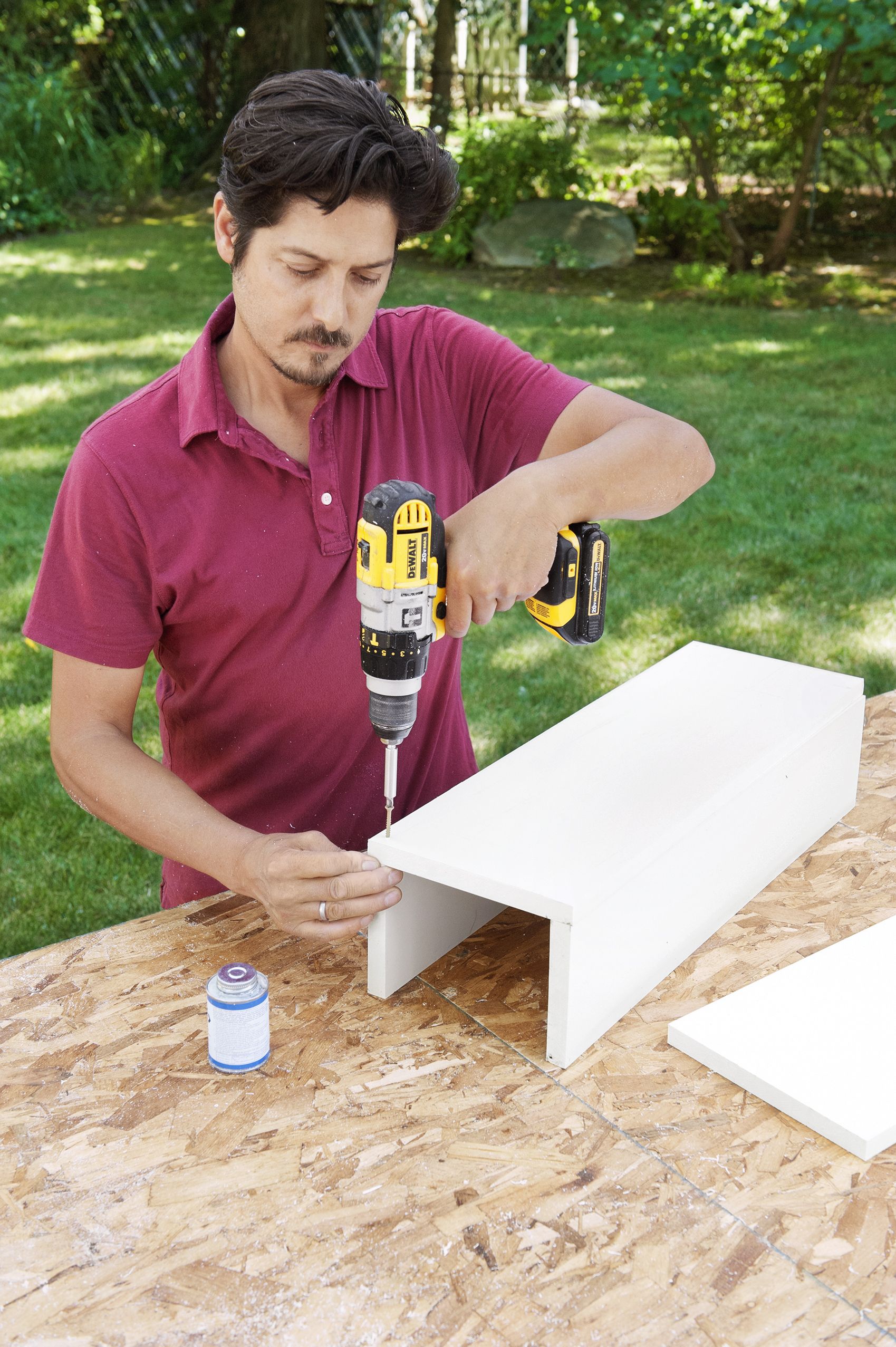
- Set the narrower pedestal panels on edge and coat the top edges with slow-setting cement.
- Place a wider panel on the wet edges.
- Screw through the panel and into the edges with deck screws at each corner, as shown, and one between them.
- Flip the assembly over and attach the last panel the same way.
Step 11: Add Stiles and Rails
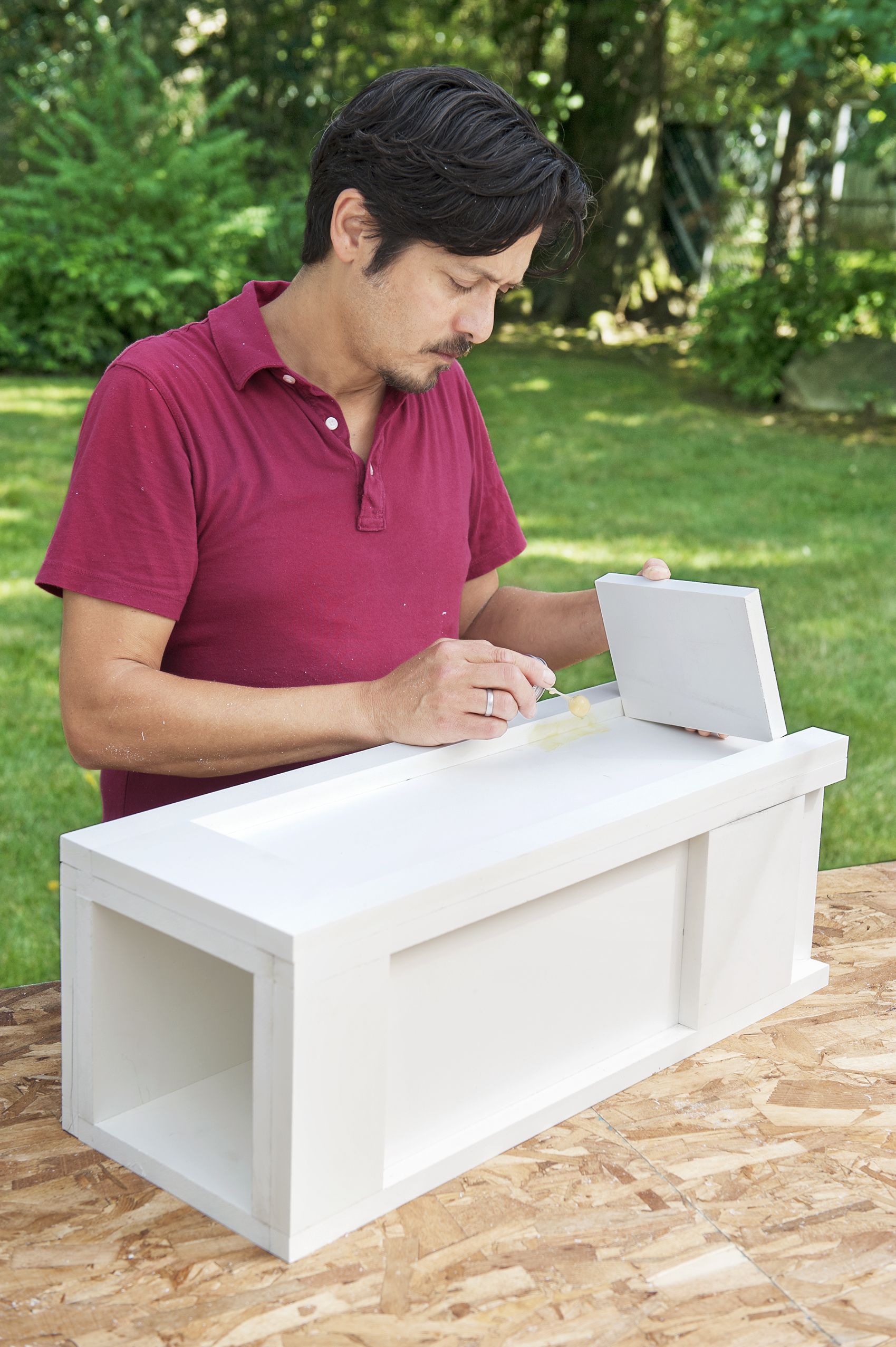
- Add the narrower stiles over the edges of the wider panels using all-purpose cement.
- Attach the wider stiles overlapping the narrower ones, making a 90-degree corner.
- Cement the rails between the stiles, flush with the top of the pedestal and inset 2 inches from the other end.
Step 12: Add Scotia Molding
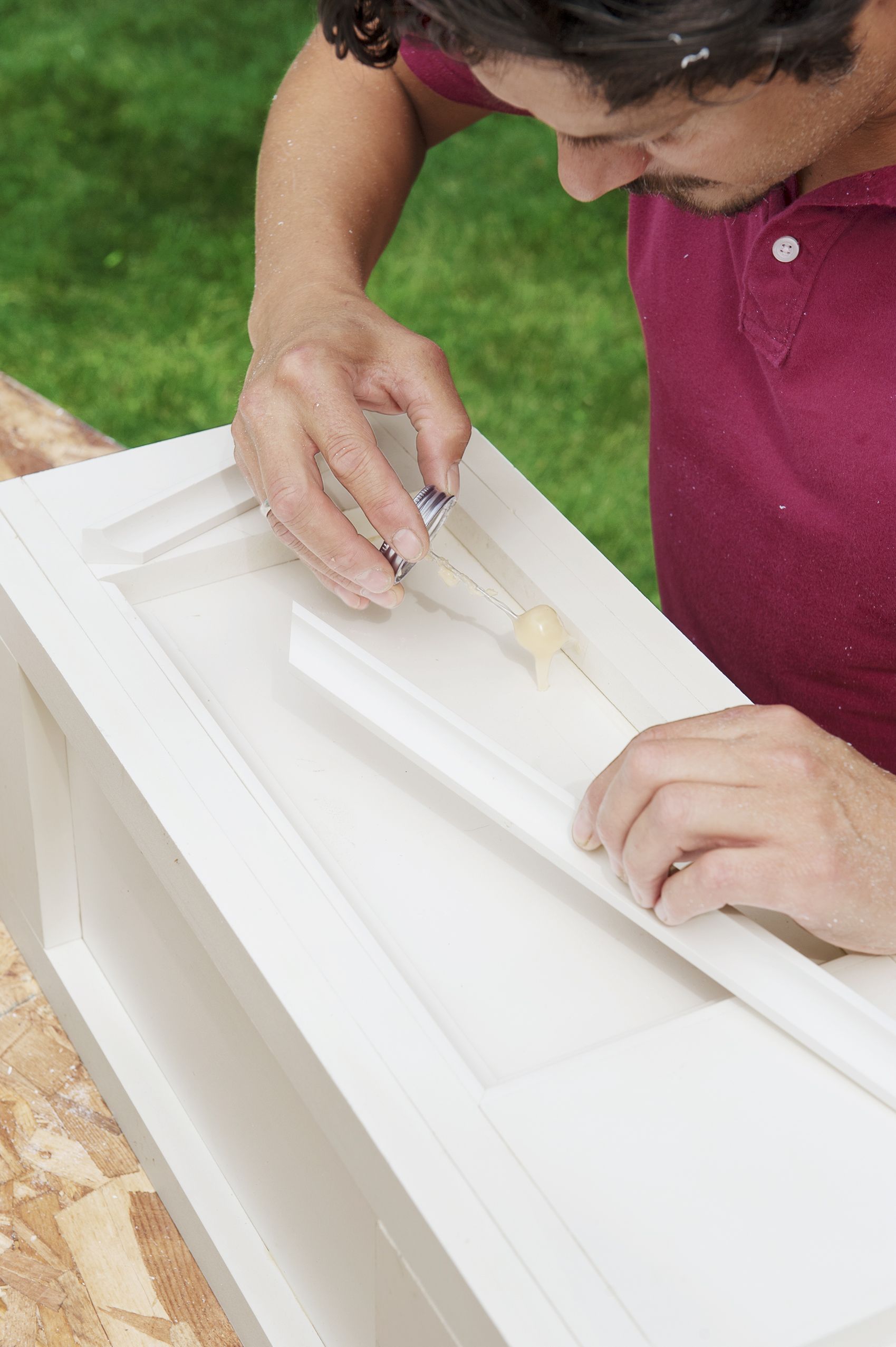
Measure and miter pieces of scotia molding to fit, and use them to frame the interior of the panels. Bond them in place one at a time with all-purpose cement. Then wrap the base of the pedestal with mitered 1-by-4-inch boards to create a plinth, using more cement.
Step 13: Add the Column
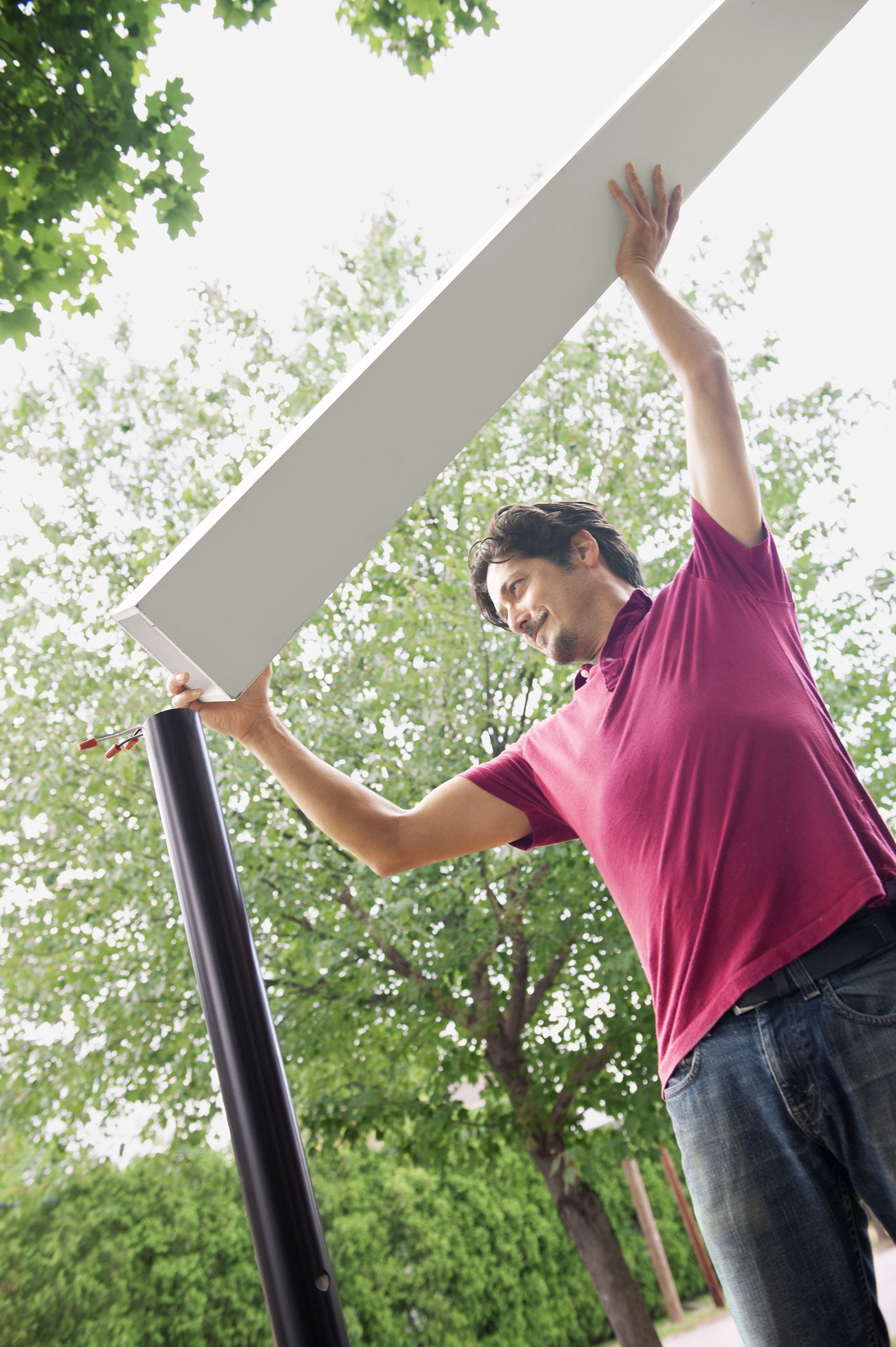
Shut off the power to the lamppost, remove the fixture, and cap the wiring. Slide the sleeve over the post and rest it on the ground. Wedge shims made from 2-by-4-inch PVC scrap between the steel post and the sleeve to keep it plumb.
Step 14: Slide on the Pedestal
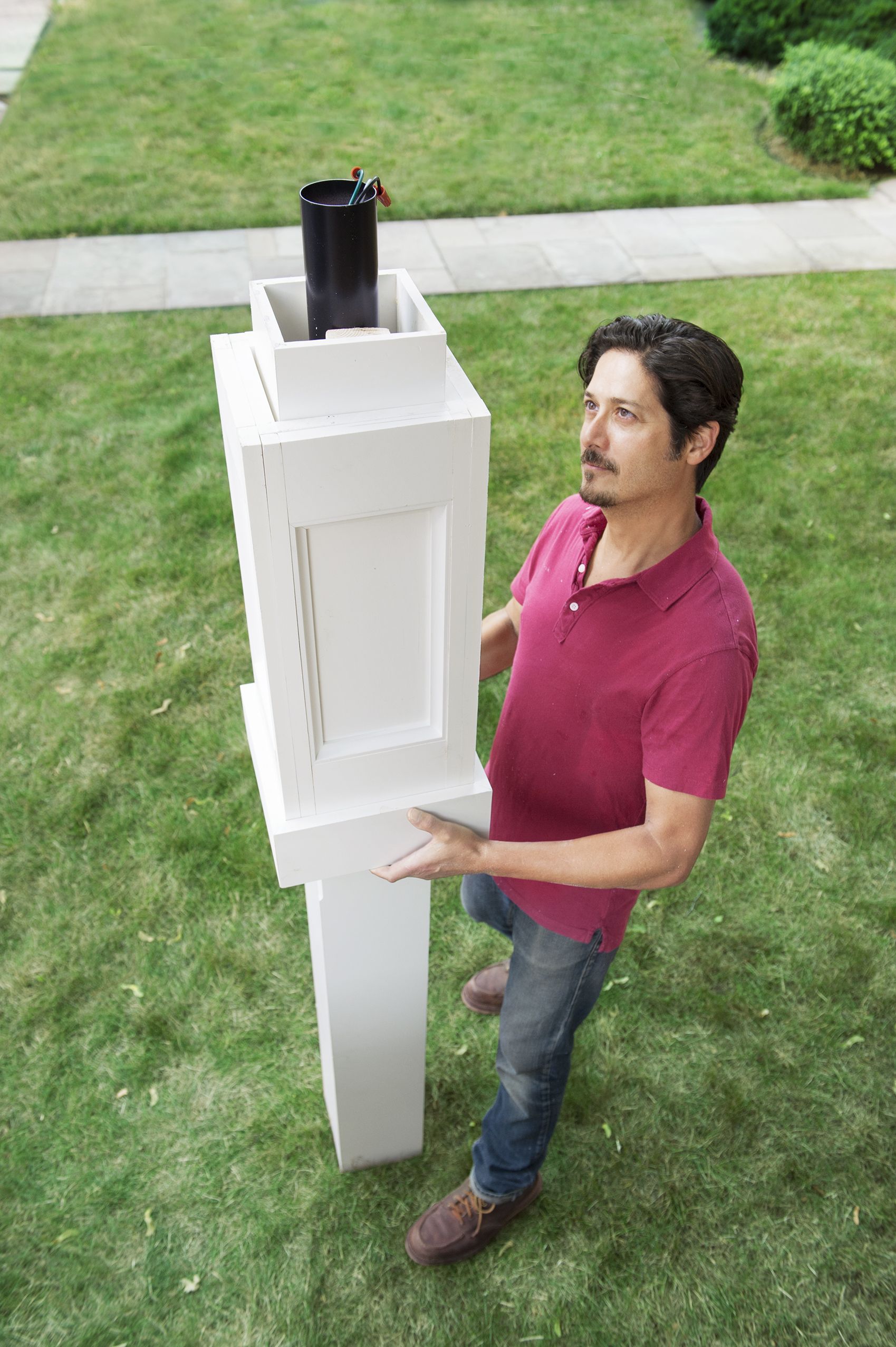
Slip the pedestal assembly over the column and slide it all the way to the ground. Shim any gap between the column and the pedestal with PVC scrap, then score and snap them flush with the top of the pedestal.
Step 15: Attach the Base Molding
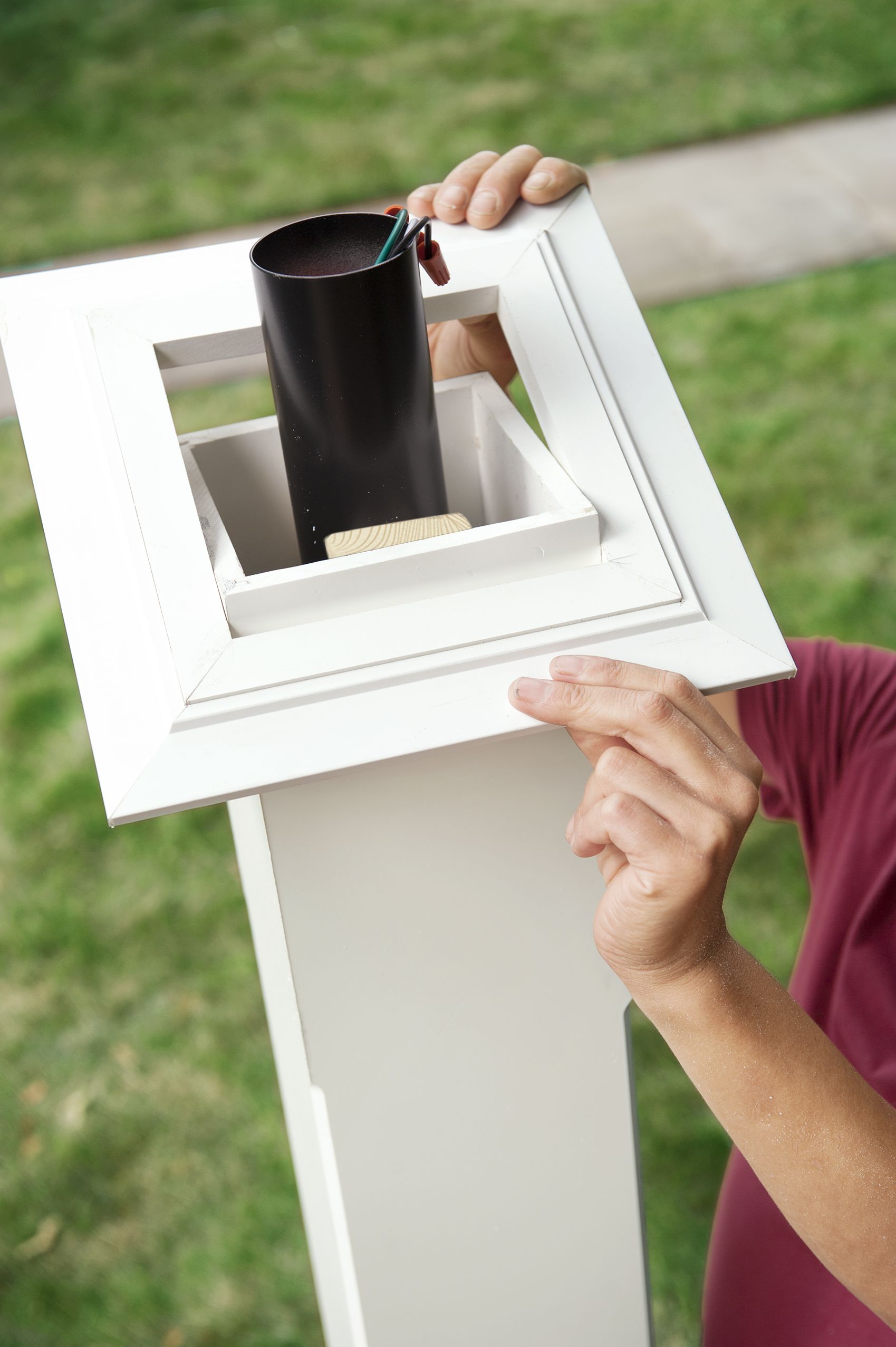
Apply a ring of all-purpose cement to the top edge of the pedestal. Slide the base molding over the column and onto the wet cement. Press it in place for 5 seconds.
Step 16: Slide on the Capital Molding
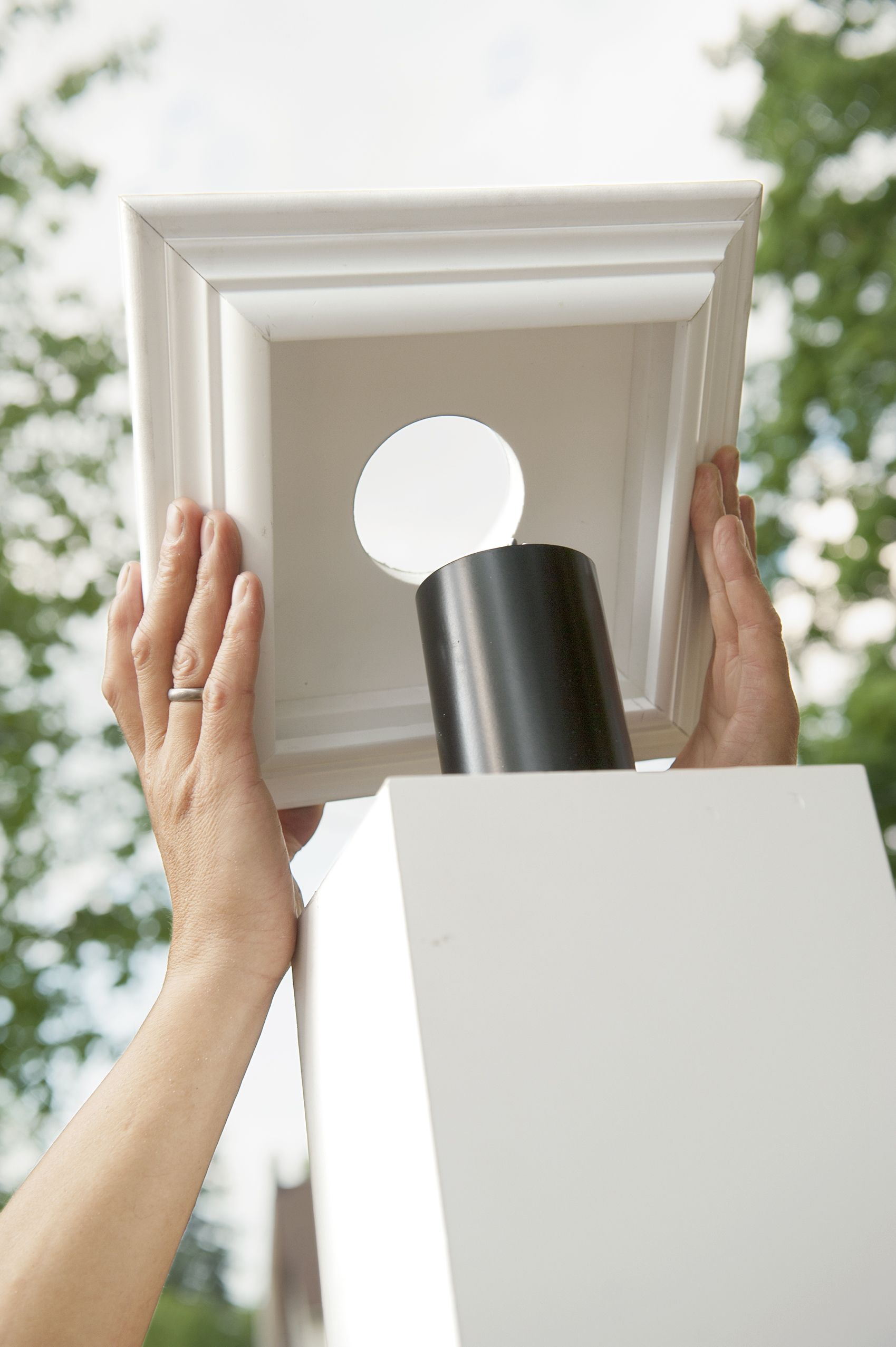
Apply cement to the top edges of the column. Fish the wires through the hole in the capital, then slip the assembly down over the pole and onto the column.
Step 17: Wire up the Fixture
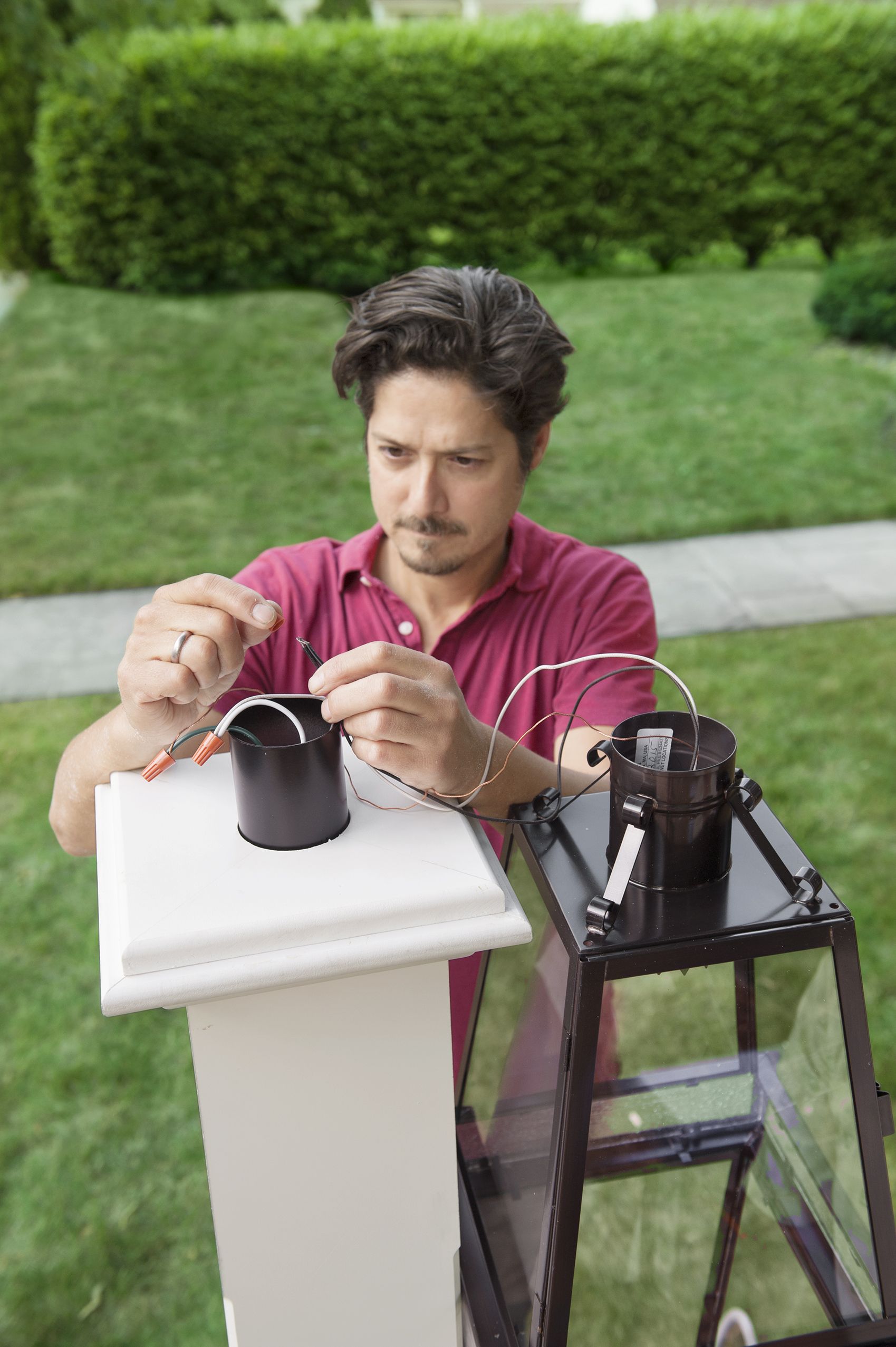
- Place the fixture on a stepladder while you work on the wiring.
- Make the connections: black to black, white to white, and green to ground. In the video, Powers stresses the importance of proper electrical connections for an operational and safe lamppost.
- Tip the fixture into position, slip it over the exposed steel post, and tighten the set screws.
- Screw in a bulb and flip the power back on.
- Test the fixture to confirm everything is working correctly.
Finishing Touches
To complete your lamppost upgrade, consider painting it with exterior-grade paint. For light colors, use 100% acrylic paint. For darker tones, use paint formulated for vinyl or PVC. Adding a protective coat of clear sealant can also enhance the paint job’s durability. To further personalize your fixture’s look, consider adding decorative caps or finials to the top of the post.
